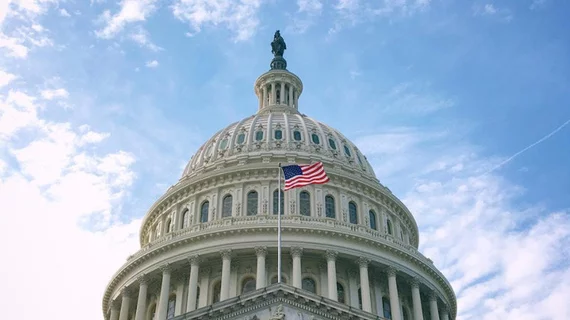Congress partially scales back radiologist Medicare pay cut
Congress has partially scaled back the radiologist Medicare pay cut that took effect on Jan. 1 but stopped short of completely undoing it.
President Joe Biden signed the $460 billion spending bill into law Saturday, averting a government shutdown, following its passage in the Senate Friday. The bill eliminates 1.68% of the 3.37% cut to the conversion factor, resulting in a CF that’s about 1.69% below the 2023 number, the American College of Radiology reported.
Imaging advocacy groups commended lawmakers for at least partly addressing this concern, but they also called for long-term Medicare payment reform.
“We thank the members of Congress and the Congressional Doc Caucus for their efforts to stave off the most egregious cuts to radiology reimbursement,” Bob Still, executive director of the Radiology Business Management Association, said in a statement issued March 8. “But year after year of funding patches is not a sustainable solution. Independent radiology practices, many still recovering from the COVID-19 pandemic, deserve permanent Medicare payment reforms that account for their rising operating costs.”
Most radiology practices will experience a Medicare pay cut of less than 3% for the remainder of 2024, RBMA estimated, depending on their modality mix and regional cost variation. In the coming months, medical associations plan to keep advocating for a permanent solution to the problems plaguing the fee schedule.
“The American College of Radiology-led coalition of physician and nonphysician providers continues to work with Congress and reiterate that year-over-year cuts are not sustainable, and the Medicare payment system needs long-term reform,” ACR said in a March 7 news update.
RBMA and members of its Radiology Patient Action Network met with members of Congress Feb. 28 to discuss potential long-term remedies. Those involved hope the coming months will produce solutions “guaranteeing predictable, adequate Medicare payments for independent radiology providers.”
The network is suggesting options, including:
- Tying reimbursement to an inflation index better reflecting radiology’s operating costs.
- Exempting low-cost screening services such as mammography from Medicare cuts.
- Instituting automatic payment stabilizers during “future economic shocks.”
- Accepting “innovative ways” to allow radiology and other specialties to benefit from value-based care reimbursement programs.
Rep. Greg Murphy, MD, R-N.C., and others had hoped to completely mitigate the 3.37% conversion factor cut. However, his Preserving Seniors' Access to Physicians Act failed to find passage in the House.
“The small cut aversion included in the funding package was not enough. While protecting insurance companies, Senate Democrats blocked every attempt to make physician payments whole. They are responsible for destroying medical access for seniors,” Murphy said March 6.
Others doc groups issued reactions echoing’s concerns from the RBMA and ACR, including the American Medical Association and the American Academy of Family Physicians. The latter said it also is “disappointed” that Congress only reauthorized the Teaching Health Center Graduate Medical Education program through Dec. 31. This “critical program” encourages physicians to practice in rural or other underserved communities, and AAFP had hoped for a multiyear extension.

